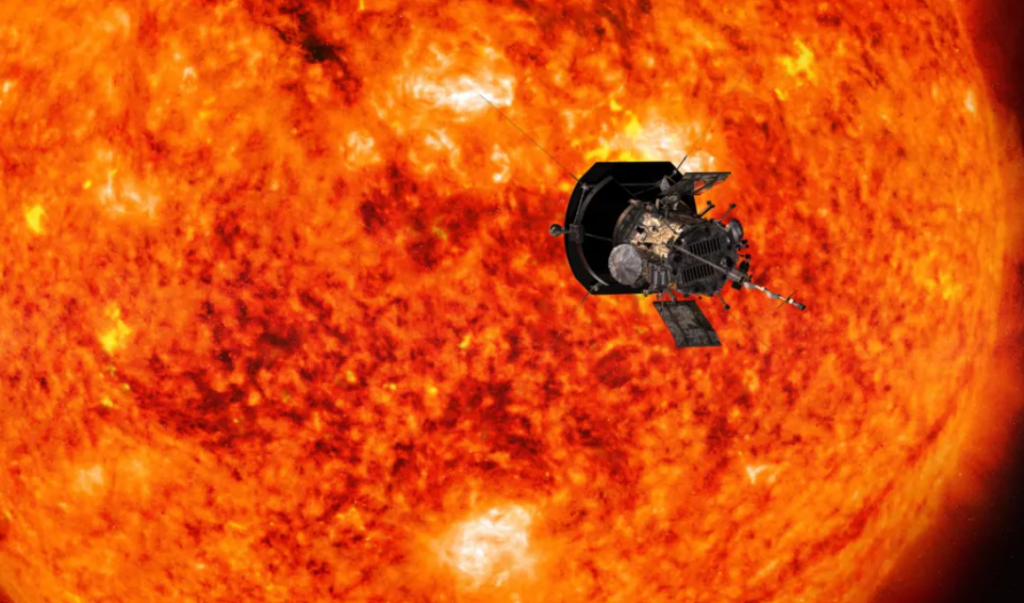NASA’s Parker Solar Probe is making history with its closest-ever approach to the Sun. The spacecraft is diving into the Sun’s outer atmosphere, facing intense heat and extreme radiation. During this high-temperature flyby, the probe will be out of communication for a few days. Scientists are eagerly awaiting a signal, expected on December 27, to confirm whether it has survived the intense conditions. The mission aims to provide valuable insights into the Sun’s behavior and improve our understanding of how it operates.
Dr. Nicola Fox, NASA’s head of science, explained, “For centuries, people have studied the Sun, but you can’t truly understand the atmosphere of a place until you visit it. We can’t fully experience the atmosphere of our star unless we fly through it.”
Launched in 2018, the Parker Solar Probe is on a mission to reach the center of our solar system. It has already made 21 passes by the Sun, getting progressively closer, but its upcoming visit on Christmas Eve will set a new record. At its closest point, the probe will be just 3.8 million miles (6.2 million km) from the Sun’s surface.
While this might not seem incredibly close, NASA’s Nicola Fox offers perspective: “If the distance between the Earth and the Sun were just one meter, the Parker Solar Probe would be only four centimeters away—quite close.”
During this approach, the probe will face temperatures of 1,400°C and intense radiation that could damage its electronics. To protect itself, it is shielded by a 4.5-inch (11.5 cm) thick carbon-composite cover. The probe’s strategy is to pass through quickly. In fact, it will be traveling faster than any human-made object, reaching speeds of 430,000 mph—faster than flying from London to New York in less than 30 seconds.
Why go to such lengths to “touch” the Sun?
Scientists believe that by sending the spacecraft through the Sun’s outer atmosphere, or corona, they can solve a long-standing mystery.
Dr. Jenifer Millard, an astronomer at Fifth Star Labs in Wales, explains that the corona is much hotter than the Sun’s surface, which is about 6,000°C. The corona, however, can reach millions of degrees despite being farther from the Sun. Scientists are trying to figure out why this outer atmosphere gets so much hotter.
The mission will also provide insights into solar wind, a constant flow of charged particles from the corona. When these particles interact with Earth’s magnetic field, they create stunning auroras. However, this “space weather” can also cause serious disruptions, affecting power grids, electronics, and communication systems.
Dr. Millard emphasizes that understanding the Sun, its activity, and space weather is crucial for our daily lives on Earth.
NASA scientists are anxiously waiting over Christmas as the spacecraft remains out of contact with Earth. Nicola Fox shared that once the signal is received, the team will send her a text with a green heart to confirm the probe’s safety. While she acknowledges feeling nervous about this daring mission, she has confidence in the spacecraft’s design. “I will worry about the spacecraft, but we’ve built it to endure these harsh conditions. It’s a tough, resilient little spacecraft,” she said.

